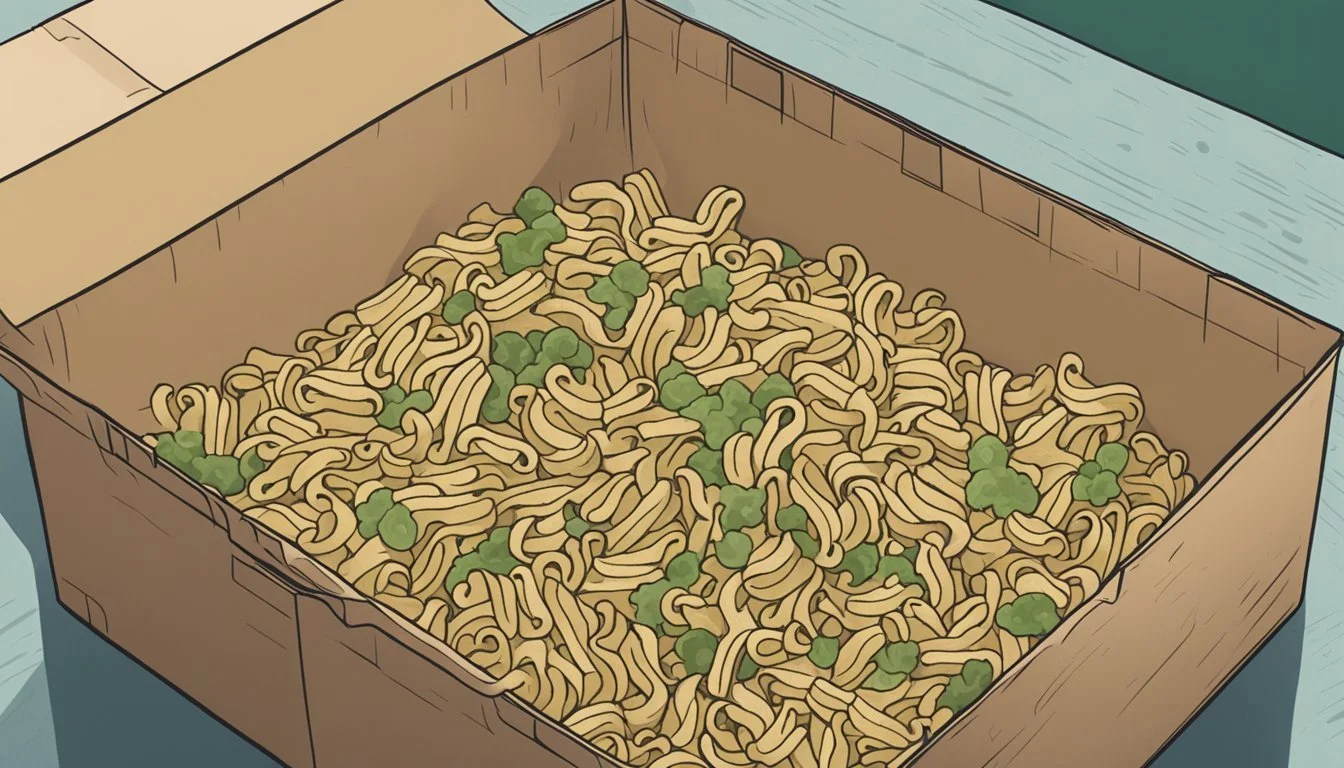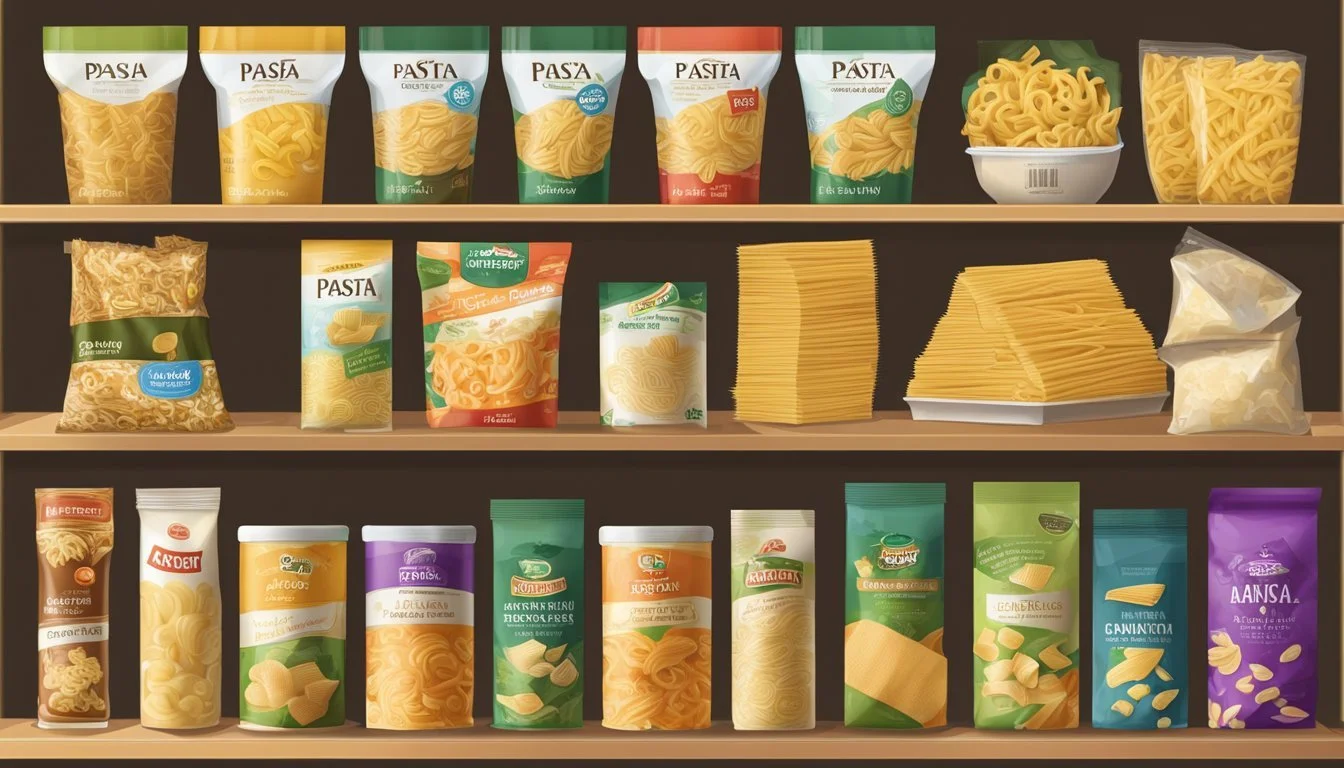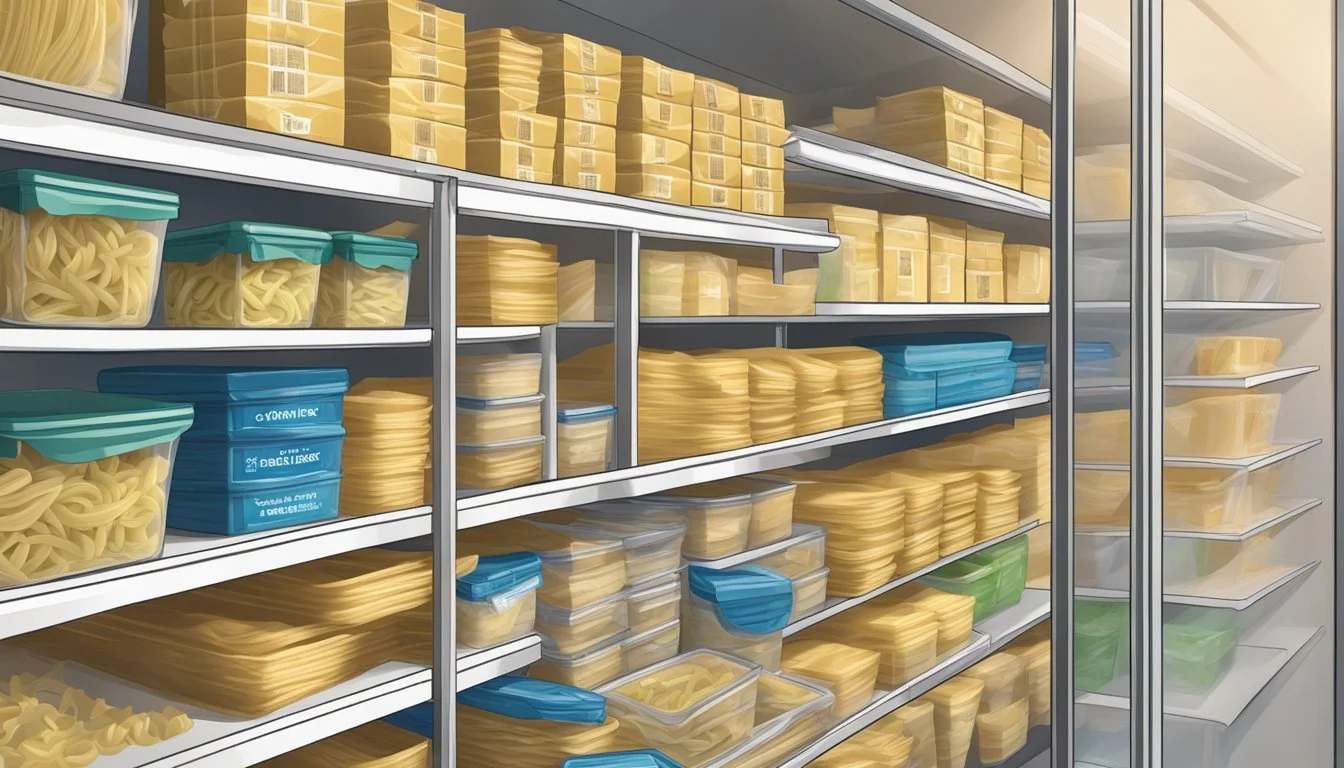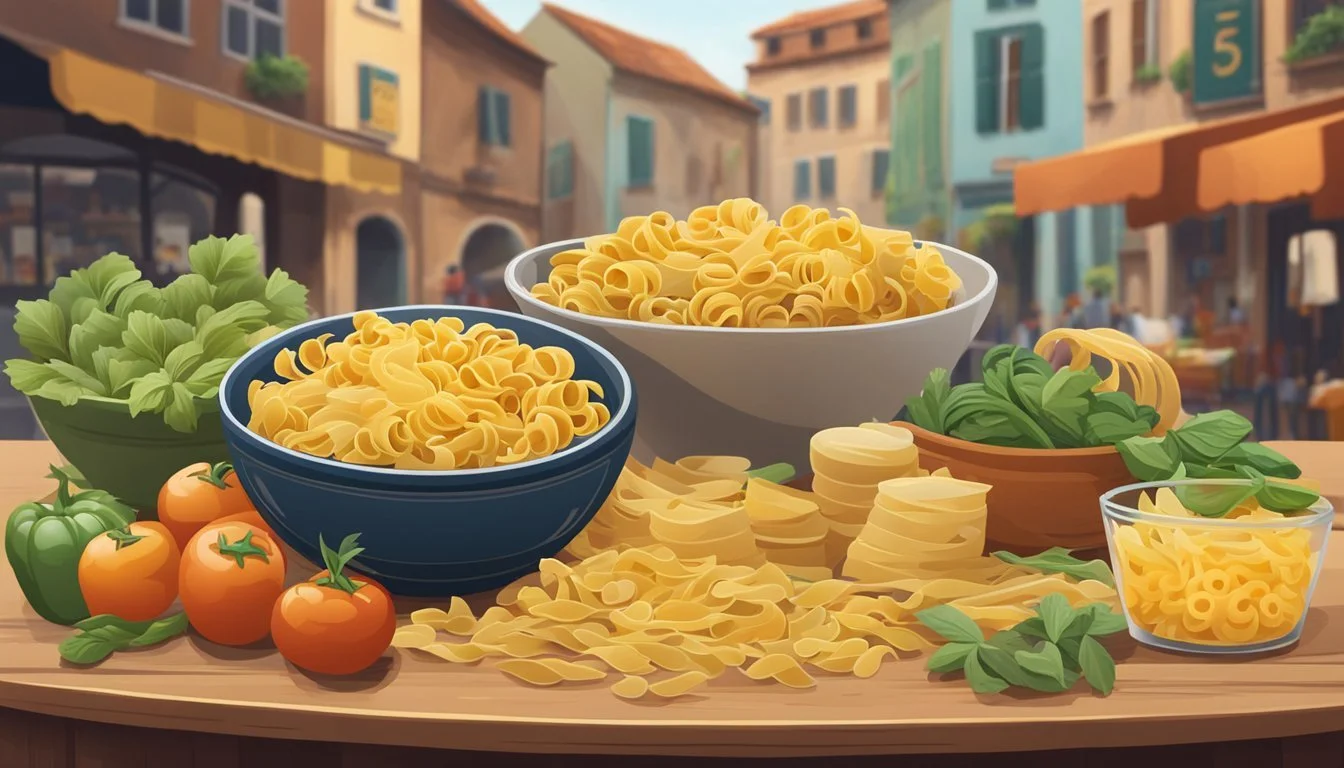Does Pasta Go Bad?
Understanding Pasta Shelf Life and Spoilage Signs
When it comes to pantry staples, pasta (What wine goes well with pasta?) is a favorite due to its long shelf life and versatility. Unlike fresh produce, pasta, particularly dry pasta, can last for a considerable time beyond its "best by" date if stored properly. Dry pasta’s longevity is attributed to its low moisture content which hinders the growth of microbes that could cause spoilage. Therefore, while a "best by" date serves as a manufacturer's suggestion for peak quality, dried pasta typically maintains its taste and texture well past this guideline.
However, pasta does not last indefinitely. The dry variety is generally at its best for about two years when kept in a dry, cool place in its original unopened packaging. Once opened, it's advisable to consume it within one year to ensure its quality hasn't diminished. Fresh pasta, purchased or made at home, has a significantly shorter lifespan due to its higher moisture content. This type of pasta should be consumed within a few days if kept in the refrigerator or frozen to extend its usability for a couple of months.
Cooked pasta, whether it's leftover from a meal or meal prepped in advance, must be handled with greater care. It can foster bacteria if left at room temperature for too long. To maintain its safety and freshness, cooked pasta should be refrigerated and consumed within a short time frame, typically within a few days.
Nutritional Profile and Varieties of Pasta
Pasta is a versatile food with various nutritional profiles depending on the ingredients and the type of pasta. These profiles range from high-carbohydrate options to protein-rich alternatives created from different flours.
Different Types of Pasta
Pasta comes in numerous shapes and sizes, each with a unique texture and often with a specific sauce pairing in mind. Spaghetti, a long, thin noodle, is perhaps one of the most recognized forms, perfect for tomato-based sauces. Penne, notable for its tube shape with angled ends, is ideal for chunkier sauces as they adhere well to the pasta. Tagliatelle, a long, ribbon-shaped noodle, is thicker than spaghetti and works well with heavier, cream-based sauces.
Shape Description Sauce Pairing Spaghetti Long, thin, cylindrical Tomato-based sauces Penne Tube-shaped with angled ends Chunkier sauces Tagliatelle Long, ribbon-shaped Heavy, cream-based sauces
Key Ingredients in Pasta
The primary ingredient in traditional pasta is durum wheat, specifically its ground form known as semolina. This type of wheat provides the firm texture and cooking stability pasta is known for. The basic ingredients include:
Durum Wheat Semolina: The coarse, purified wheat middlings of durum wheat.
Water: Used to form the dough.
Eggs (in some pasta types): Provide richness and color.
Healthier pasta options can be found in varieties made from whole grains, which retain more of the natural fiber and nutrients compared to those made from refined flour. In addition to traditional wheat-based pastas, there are alternatives such as those made from legumes like chickpeas, which offer higher protein and fiber content. These ingredients contribute to the nutritional value, making pasta either a healthy option or an indulgence depending on the choice.
Proper Storage Methods for Pasta
Proper storage of pasta is crucial for maintaining its quality and extending its shelf life. It involves keeping dry pasta in a cool, dark place and ensuring cooked pasta is refrigerated or frozen in a suitable container.
Storing Dry Pasta
Dry pasta should be stored in a cool, dark place, such as a pantry or cupboard, away from heat and moisture which can lead to spoilage. For optimal shelf stability, it is ideal to keep the pasta in its original packaging until ready to use. After opening, one can transfer the pasta to an airtight container or a zip-top bag to prevent exposure to air and humidity.
Location: Pantry or similar storage area
Condition: Cool, dry, and dark
Packaging: Airtight container or resealable bag
Storing Cooked Pasta
Once pasta is cooked, it needs to be stored in the refrigerator within two hours to prevent bacterial growth. In the fridge, cooked pasta can last for 3-5 days. For longer storage, cooked pasta can be frozen. To freeze, one should let the pasta cool, toss it with a touch of oil (to prevent sticking), and place it in an airtight container or freezer-safe bag. When properly frozen, it can last for up to 2 months.
Refrigerator Storage:
Duration: 3-5 days
Container: Airtight with a lid
Freezer Storage:
Duration: Up to 2 months
Preparation: Toss with oil before freezing
Using Airtight Containers
For both dry and cooked pasta, airtight containers are a cornerstone of effective storage. They shield the pasta from moisture, air, and contaminants. In the case of dry pasta, containers also block out light which can degrade the pasta over time. Oxygen absorbers are sometimes used to further remove air and protect the quality of the pasta.
Dry Pasta:
Benefit: Protects from moisture and light
Additional Tip: Use oxygen absorbers for even longer shelf life
Cooked Pasta:
Benefit: Prevents food from absorbing other odors/flavors in the fridge or freezer
Note: Label containers with the date to keep track of freshness
Recognizing Signs of Spoilage
When assessing whether pasta has gone bad, it is important to examine its visual appearance, smell, and texture. These indicators can help detect spoilage that could lead to foodborne illnesses.
Visual Indicators
Mold: If there are signs of mold, often appearing as fuzzy spots of white, green, or black, the pasta should be discarded.
Discoloration: Pasta that has spots or areas where the color has changed may indicate spoilage.
Insects or Eggs: The presence of insects or their eggs within the pasta package is a clear sign of contamination.
Olfactory Indicators
Odor: A musty or sour smell emanating from the pasta is a signal that it may be unsafe to eat.
Staleness: Even in the absence of a strong odor, a stale or off smell can suggest the pasta is past its prime.
Texture Changes
Moisture: Pasta should be dry, so any signs of dampness or stickiness indicate spoilage due to unwanted moisture.
Consistency: If the texture of the dry pasta has changed and it has become too hard or conversely, if it turns mushy when cooked, this is an indication that it should not be consumed.
Understanding Pasta Shelf Life
The longevity of pasta varies based on type and storage methods, with dried pasta having the longest shelf life and fresh pasta the shortest. Proper storage is key to maintaining pasta quality past the expiration date.
Shelf Life of Dry Pasta
Dry pasta is a pantry staple due to its long shelf life. When stored properly in a cool, dry place, unopened packs of dry pasta generally maintain quality for up to two years beyond their "best-by" date. Once opened, it is recommended that dry pasta be used within one year. Signs of spoilage in dried pasta include changes in color, a musty smell, or any signs of mold or pest infestation.
Quality Preservation Tips:
Store in airtight containers.
Keep in a cool, dark cupboard away from heat sources.
Shelf Life of Fresh and Homemade Pasta
Fresh pasta, sold refrigerated or made at home, requires more careful handling than its dry counterpart. Fresh pasta should be consumed within two days if kept in the fridge. If frozen, it can typically last for up to two months without significant degradation in quality. Homemade pasta, which may not contain preservatives, often has a similar shelf life to fresh commercially bought pasta.
Storage Guidelines:
Refrigerate in airtight packaging.
Freeze if not planning to consume promptly.
Shelf Life of Cooked Pasta
Once pasta is cooked, its shelf life reduces considerably. Cooked pasta should be eaten within three to five days when stored in the refrigerator. The presence of additional ingredients, such as sauce, meat, or vegetables, can affect its longevity.
Tips for Storing Cooked Pasta:
Refrigerate within two hours of cooking.
Store in shallow airtight containers or resealable bags.
Safe Consumption and Foodborne Pathogens
Consuming spoiled pasta can expose individuals to harmful foodborne pathogens that pose a risk to health. Ensuring safe consumption involves understanding the risks associated with spoilage and bacterial contamination.
Risks of Consuming Spoiled Pasta
Spoilage: Spoiled pasta often exhibits changes in color, texture, and smell. Deterioration in quality may not only affect the taste but can also indicate the presence of harmful microorganisms.
Bacteria: The main concern with spoiled pasta is the growth of bacteria such as Bacillus cereus. This bacteria can cause foodborne illnesses if pasta is improperly stored or left out at room temperature for extended periods.
Bacillus cereus thrives in conditions where pasta is not refrigerated:
Fresh pasta left unrefrigerated should be consumed within hours.
Cooked pasta should not remain at room temperature longer than two hours.
The consumption of pasta contaminated with Bacillus cereus can lead to severe symptoms of foodborne illness, including:
Symptoms Onset Time Duration Nausea 1-5 hours 24 hours Vomiting 30 minutes-6 hours 6-24 hours Diarrhea 6-15 hours Up to 24 hours
To minimize risks, it's essential to store pasta correctly and to heed the signs of spoilage before consumption.
Tips for Cooking and Storing Leftovers
Correct preparation and storage of leftover pasta are crucial for maintaining its quality and safety. Here’s how to get the best out of your pasta dishes after the initial meal.
Optimal Cooking Techniques
When cooking pasta to be used later as leftovers, aim for the al dente texture, which means it should be firm to the bite. This holds up better during reheating. Undercooking it slightly is also advisable, as it will cook further when reheated. This helps prevent the pasta from becoming too soft or mushy.
Al Dente: Cook pasta 1-2 minutes less than the package instructions for leftovers.
Batch Size: Prepare the appropriate amount to avoid excessive leftovers.
Preserving Leftovers
To ensure leftovers stay fresh, one should store them properly. It is recommended to refrigerate pasta within 2 hours of cooking. Divide pasta into airtight containers or a zip-top bags before refrigerating to avoid the formation of moisture, which can promote bacterial growth.
Refrigerated pasta (sauce separate): Lasts for 3-5 days. Refrigerated pasta (sauce included): Best to consume within 2-3 days, as sauces can alter in consistency.
Cooling: Allow pasta and sauce to cool completely to prevent condensation inside storage containers.
Oil or Butter: Tossing pasta with a small amount of oil or butter can prevent sticking.
Freezing: For longer storage, one can freeze pasta, particularly if it's mixed with tomato-based sauces, though creamy sauces may change in texture.
Storage Method With Sauce Without Sauce Freezer Safe Airtight Container Yes (2-3 days) Yes (3-5 days) Yes (Tomato-based sauces) Zip-Top Bag Yes (2-3 days) Yes (3-5 days) Less Ideal (Creamy sauces)
Following these guidelines ensures the safety and quality of leftovers, making them almost as enjoyable as the original meal.
Preventive Measures to Extend Pasta's Shelf Life
Proper storage and handling are crucial to prevent pasta from spoiling and to maximize its shelf life. Through preventive measures focused on environmental control and cleanliness, one can ensure that pasta remains safe and of high quality for consumption.
Preventing Pasta Spoilage
To effectively prevent pasta spoilage, one should store pasta in an airtight container. This container must then be placed in a cool, dark place such as a pantry or cupboard, away from heat sources and direct sunlight which can induce deterioration. Dry pasta naturally has a long shelf life, but by eliminating exposure to air, the risk of oxidative degradation is minimized. For instance:
Uncooked Dry Pasta:
Lasts: Up to 2 years past the expiration date.
Storage: Airtight container in a cool, dark place.
Opened Dry Pasta:
Lasts: Roughly 1 year.
Storage: Reseal packaging or transfer to an airtight container in a cool, dark place.
Avoiding Cross-Contamination
Cross-contamination can introduce bacteria that compromise both the safety and quality of pasta. To avert this, pasta should be kept separate from other foods that may contain moisture or transfer odors. Kitchen tools and surfaces should be thoroughly cleaned before and after they come into contact with pasta. Here's what to keep in mind:
Storage: Always seal pasta away from foods with strong odors or that are prone to spoilage.
Pantry Maintenance: Regular inspections for pantry bugs, insects, and bugs are essential. Remove any infested items and cleanse the area to prevent spread to pasta.
Moisture Control: Ensure that pasta is kept dry to avoid creating an environment suitable for bacterial growth and to prevent the possibility of freezer burn if stored in the freezer.
By adhering to these preventive protocols, the shelf life of pasta can be considerably extended through the avoidance of spoilage and contamination.
Significance of Pasta in Dietary and Market Trends
Pasta stands as a fundamental food commodity in global markets and is a significant source of energy in diets worldwide. It has seen an upswing in demand, underpinned by consumer health trends and market behaviors.
Pasta in the Global Market
The international pasta market is marked by a substantial growth trajectory with projections valuing it at USD 27.91 billion in 2024. The market's expansion reflects pasta's status as a versatile and widely embraced food. Preferences are notably shifting towards healthier options, which in turn are influencing market offerings. Pasta benefits from being a familiar staple, with its versatility inviting innovation and adaptation to emerging dietary trends.
Pasta as an Energy Source
Pasta is traditionally seen as a high-energy dietary component, primarily due to its carbohydrate content. It serves as a staple energy source for many, providing the necessary fuel for daily activities. Most varieties of dry pasta in the United States are enriched with key nutrients such as iron, riboflavin, thiamine, and folic acid. These enhancements bolster its nutritional profile, making it not just an energy source, but also a conveyor of essential micronutrients. A typical serving of cooked pasta can supply significant percentages of the recommended daily values for these added nutrients.
The interplay between pasta's role in diets and its ever-evolving market presence is tightly woven, with health-conscious consumer patterns shaping the creation of new products that retain the energy-providing qualities of traditional pasta while aligning with nutritional advancements.
Troubleshooting Common Pasta Storing Issues
When storing pasta long-term, maintaining the quality of the pasta is crucial. This involves mitigating any potential issues related to moisture, odors, and pests, as well as understanding the best practices for freezer storage.
Dealing with Moisture and Odor
To prevent moisture and subsequent mold in pasta, ensure it’s stored in an airtight container. If the pasta is not sealed properly, the moisture can lead to spoilage and also produce an unpleasant odor. One can use silica gel packets to absorb any excess moisture. Keeping pasta in a cool, dry area of the pantry reduces the risk of these issues.
Protection Against Pests
Pantry bugs and insects can be a real nuisance. They are attracted to food sources like pasta. To protect dry pasta from these pests, storage in sturdy glass or plastic containers with tight-fitting lids is recommended. Regularly cleaning the pantry shelves and keeping an eye out for signs of infestation are good preventive measures. Additionally, placing bay leaves inside the container can act as a natural deterrent for many pests.
Freezer Storage Tips
Freezer storage is a method to extend the shelf life of pasta beyond the pantry. Fresh pasta can be frozen for up to two months. Before placing pasta in the freezer, it should be stored in a zip-top bag or an airtight container to prevent freezer burn. Labeling is essential: mark the bags or containers with the freezing date. To use, simply thaw in the refrigerator, which makes it an easy go-to option when needed.








